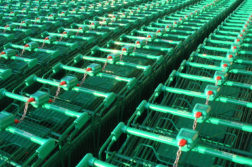Last Thursday 2500 people lost their jobs when the cleaning company Swan Services went into voluntary administration.
If Thursday was a typical day, around 11,000 people would have become unemployed or have otherwise quit work on that day. This is normal churn in the labour force, and fortunately a roughly equal number (pdf) find work.
Those figures give some context to Ford’s announcement on the same day that in 2016 it will close its Melbourne and Geelong car plants, with the loss of 1200 jobs. Why then has it taken on the status of a death in the family?
One reason is that Ford’s job losses are permanent. Offices and hotels still have to be cleaned, but it is unlikely (although not impossible) that Holden and Toyota will fill the gap left by Ford. There are consequences down the supply chain and it is possible that some component firms, struggling to exploit scale economies, will find the loss of Ford’s business is just too much.
It must be remembered however, that Ford is the smallest of the three car makers, accounting for only 38,000 of the 222,000 cars produced in Australia in 2011, and that Australian car production has almost halved over the last 10 years – the loss of Ford’s business is just another bump in the curve (pdf). Geelong and the surrounding Barwon region, where about half the jobs will be lost, will suffer the effects of the layoffs, but Geelong is not a one-employer town – the population of the region is around 300,000 and growing.
The other factor is that Ford is a manufacturing firm – one of Australia’s three remaining car manufacturers. (At one point there were seven car manufacturers, some with more than one model.) Car manufacturing looms strongly in our perception of Australia as a modern industrialised country.
That symbolic importance is why Tony Abbott has been able to seize on the closure as yet another example of the damage the Gillard Government is supposedly doing to the economy – another chance to mention the carbon tax, labour market regulation and our taxation levels. He didn’t mention that Ford would be hit with levy to raise funds for the Coalition Government’s paid parental leave scheme, nor did he mention that car manufacturing in Australia has been unprofitable since 2004. The reality is that even if we supplied free energy and reduced wages to US or Chinese levels, there is no way producing 38,000 cars, in two distinct models, could be profitable.
Then Senator Doug Cameron and some others suggested that tariff protection should be on the table for consideration. He may have forgotten that, in the 1970s, even an effective 120 per cent rate of tariff assistance to the car industry had been inadequate to support it.
Crikey’s editorial on Thursday put it bluntly, when it said that the real problem was that Ford was making things we don’t want. Certainly there has been a collapse in the sale of Ford Falcons and Holden Commodores. Production of Falcons for the domestic market fell from 105,000 to 23,000 over the eight years to 2011 – a figure easily supported by a glance at a parking lot. The big “family car” is going the way of the Sunday roast and the broadsheet newspaper.
There have been several voices criticising any moves to single out the car industry for support; such intervention does not sit easily with the general pro-market approach embraced by both the main parties. But in a rare show of bipartisanship, both Labor and the Coalition have pledged ongoing support for the car industry, mainly in the form of cash grants.
Labor’s support is understandable in view of its union traditions. Car plants are the archetype of the traditional unionised male workplace, and that base of the Labor Party is eroding rather quickly. The Coalition, however, has no such tradition.
The overriding explanation is that both main parties are locked into a policy idea that is long past its use-by date. That is, that manufacturing is the path to modernisation and prosperity.
Historically that idea had validity. In the last half of the nineteenth century the UK was by far the world’s most prosperous country, and it had achieved this prosperity through manufacturing. Its colonial business model was to confine colonies to providing raw materials and to keep manufacturing in Britain.
Australia, at Federation, broke from that bondage. In the “free trade” vs “protection” struggle, protection won, and over the next 50 years we built up a large and diversified manufacturing sector. At its peak, in the late 1960s, a quarter of all employment was in manufacturing. (The figure now stands at around eight per cent.) But the symbolic peak was undoubtedly in 1948, when Prime Minister Ben Chifley was photographed with the first Holden to come off the newly completed Fisherman’s Bend assembly line. Australia had come of age.
The trouble with this policy was that the plant which had been state-of-the-art in 1948 was 30 years old by 1978, and was requiring ever higher levels of subsidy. Much of our manufacturing was very labour-intensive and under-capitalised. The jobs may have been good jobs in another era, but by and large they were either unskilled or semi-skilled. The policy had worked to develop manufacturing, but manufacturing was no longer the engine of prosperity.
Over the 1980s the Hawke-Keating government wound back tariff protection, but the policy of supporting manufacturing remained. For the car industry the plan was to replace tariff and quota protection with support to encourage firms to achieve scale economies through integration with the global industry – a policy which remains to this day.
Given this history, and the iconic significance of manufacturing, no self-respecting political party approaches an election without a promise to support manufacturing.
There is no doubt that a strong manufacturing sector remains a mark of an advanced developed country, a point emphasised in the wake of the Ford announcement by Professor Goran Roos, chair of the Advanced Manufacturing Council of South Australia. But it is wrong to cling to the belief that manufacturing is still the source of prosperity. That would confuse cause and effect. Competitive manufacturing is one of the outcomes of a well-managed economy, not one of its causes. Its role has changed.
For the most part the activities that define “manufacturing” – cutting, milling, sewing, casting, soldering etc – have become highly automated and much lower-cost. Some activities which for now are still labour-intensive have moved to developing countries. Manufacturing itself is just one part of a long chain of adding value, and much of that value lies in services which were once considered peripheral to manufacturing, such as design, plant engineering and production control, all activities which are skill-intensive. In some industries “manufacturing” is a vanishingly small part of the value chain.
In short, we must stop thinking about “manufacturing” and think rather about the skills we employ in our economy. We need to think about what people do, not what comes out of a factory door.
Such a policy would still satisfy Kevin Rudd’s concern about “making things”. There would be some highly automated mass production where labour costs are of minor concern and even some labour-intensive manufacturing where that labour is highly skilled. There is no reason we would not have a car industry. But such a structure is not built on a “manufacturing” policy. Rather, it emerges from a policy of supporting the development of skills necessary for our economy to thrive in a world where we have to compete on the basis of our wits.
Donate To New Matilda
New Matilda is a small, independent media outlet. We survive through reader contributions, and never losing a lawsuit. If you got something from this article, giving something back helps us to continue speaking truth to power. Every little bit counts.



